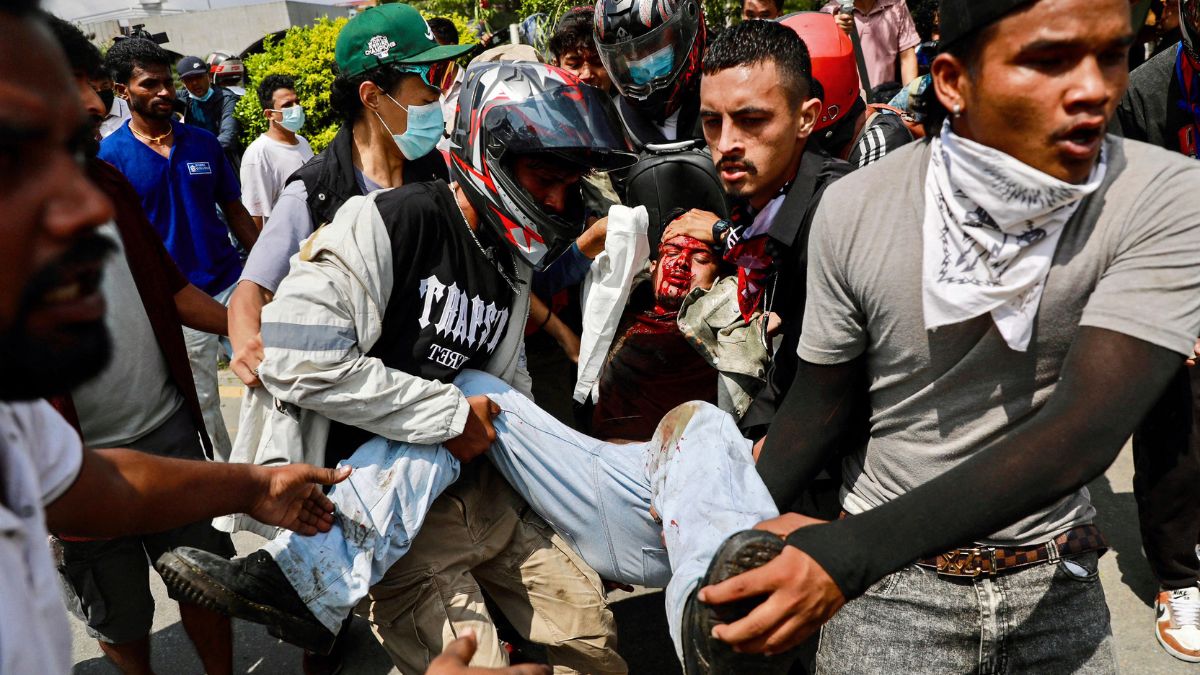Protests Erupt Quickly
Protests erupted in Nepal, leading to a significant social media ban and curfew. This was in response to demonstrations. The protests triggered a wave
of restrictive actions by authorities. The protests were a direct challenge to the existing social order. The implementation of a social media ban significantly restricted information flow and public communication. These measures aimed to quell the demonstrations. The government's swift response underscores the seriousness with which it viewed the unrest, which in turn raised questions about freedom of expression and the right to peaceful assembly.
Social Media Shutdowns
A crucial aspect of the government's response involved restricting access to social media platforms. The ban on social media had a wide impact, limiting the ability of citizens to organize and communicate. The restriction was seen by many as an attempt to suppress dissent and control the narrative surrounding the protests. This strategic shutdown of platforms such as Facebook, Twitter, and others effectively curbed the spread of information. The sudden social media ban in Nepal has been criticized by international human rights organizations. The aim was to control the spread of information and to prevent mobilization. The restrictions have created a climate of censorship. The digital silence further hampered public discourse. The government's move raised concerns about the free flow of information.
Curfew Implemented Rapidly
Following the social media ban, the government introduced a curfew in areas where protests were most active. The curfew limited the movement of people and public gatherings. This further hindered protest activity. The aim of the curfew was to enforce order and contain the situation. The curfew’s impact extended beyond the protesters, affecting daily life for many residents. The curfew was implemented in an effort to limit the impact of the protest. The curfew resulted in economic disruptions and curtailed citizen movement. This added to the existing sense of unease in the affected communities.
Causes of Unrest
The underlying reasons for the protests are varied, stemming from a mix of social, political, and economic grievances. Public dissatisfaction with the existing policies and government performance is a factor. Economic inequality and a perceived lack of opportunities likely played a role in fueling the protests. Another factor is specific political issues. Multiple issues have contributed to the outbreak of the demonstrations. The unrest reflects a wider set of issues that the government must address. These causes showcase the complex dynamics. The causes underscore the deep-seated challenges within Nepali society.
Government Response Outlined
The government's response has been marked by a combination of measures, including the social media ban, curfews, and increased security presence. This robust response highlighted its intention to manage the situation. Government officials have also made statements, emphasizing the importance of maintaining order and stability. Some have expressed willingness to engage in dialogue with protesters. The government's actions reflect the need to balance maintaining control with addressing the root causes of discontent. The government has taken steps to respond to the protest. The government sought to implement measures to show that they were responding. These actions, however, also raise concerns among human rights organizations.
Impact on Daily Life
The protests and the government's response have significantly impacted the daily lives of Nepali citizens. The restrictions on social media and movement made daily routines difficult. Business activities, education, and social interactions were disrupted. These measures have created a sense of uncertainty and unease within communities. Many people struggled to access news and information due to the social media ban. The economic impact, with businesses closed and supply chains disrupted, added to the hardship. The impact has affected many aspects of day-to-day activities. The disruptions brought about by these measures have increased feelings of frustration and uncertainty.
International Reactions Noted
The events in Nepal have drawn international attention, with various organizations and governments expressing their concerns. Some international bodies have urged the government to respect human rights and freedom of expression. Other countries have issued statements advising their citizens about the situation. International reactions highlighted the global implications of the unrest. These international responses included statements that offered some support. The response highlights concerns around the situation. The international community is observing the developments closely, watching Nepal's reaction to these protests.
Role of Political Parties
Different political parties in Nepal have taken varying stances on the protests, reflecting diverse opinions and interests. Some parties have offered support to the protesters, while others have backed the government's actions. This range of positions reflects the complex political landscape of the country. The actions of these parties shape the broader context of the protests. Political parties’ engagement with the demonstrations affects the narrative. Party leaders have been involved. This complicated dynamic underlines the need to engage different players. The political parties' actions will influence the situation in Nepal.
Economic Implications
The unrest has had a significant economic impact on Nepal. The disruption of business activities and supply chains have caused economic losses. The tourism industry, a vital source of revenue, has been severely impacted. There is potential damage to long-term economic growth. The government's ability to manage the economic fallout is crucial. The economic implications include business closures. The loss of tourism revenue and disrupted supply chains will continue to affect the country. The events have damaged the economy. The economic repercussions are serious.
Looking Ahead: The Future
The situation in Nepal remains volatile, and the future is uncertain. The government's ability to address the underlying grievances and restore social order is crucial. The resolution depends on the government’s ability to handle the situation. Dialogue and reconciliation are necessary steps toward long-term stability. Addressing economic issues and respecting human rights will be critical. The outcome will shape Nepal's future. The path forward depends on the decisions made by the government.













